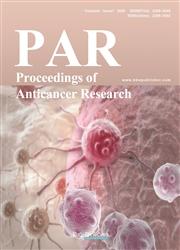Exploring the Protective Effect of the Ethanolic Extract of Rosa laevigata Michx. Fruit on Rats with Mesangial Proliferative Glomerulonephritis Based on NLRP3 Inflammasome Pathway
引用次数: 0
Abstract
Objective: To investigate the effect of the ethanolic extract of Rosa laevigata Michx. fruit on rats with mesangial proliferative glomerulonephritis based on the NLRP3 inflammasome pathway. Methods: Thirty Wistar rats were divided into three groups, a blank control group, a diabetic nephropathy (DN) model group, and an ethanolic extract intervention group, according to the random number table method, with 10 rats in each group. One day before the experiment, basic feeding was initiated for all the rats; the changes in activity and weight of each group of rats were observed and recorded after 7 d, and a rat model of renal function injury was established after 1 d. Results: Compared with the control group, the model group had significantly higher kidney/body ratio, 24 h urine protein, serum creatinine (SCr), blood urea nitrogen (BUN), glomerular mesangial cell (GMC) count, and extracellular matrix (ECM) positive area ratio (P < 0.05); the same indicators were significantly lower in the intervention group than in the model group (P < 0.05). The NLRP3 inflammasome pathway in renal intrinsic cells was activated in the intervention group. The overactivation of NLRP3 inflammasome is known to promote interleukin (IL)-1? release, which was inhibited in the intervention group. Conclusion: The ethanolic extract of Rosa laevigata Michx. fruit has a protective effect on renal intrinsic cells and may be related to NLRP3 inflammasome pathway, suggesting that the fruit of Rosa laevigata Michx. has a potential role in protecting renal intrinsic cells from inflammatory damage. NLRP3 inflammasomes are involved in the development of various chronic inflammatory diseases, such as acute and chronic glomerulonephritis and renal fibrosis.金樱子乙醇提取物的保护作用探讨。NLRP3炎症小体通路对系膜增生性肾小球肾炎大鼠的影响
目的:研究月季乙醇提取物的药理作用。基于NLRP3炎性小体途径对肾小球肾炎大鼠肾系膜增生性肾炎的影响。方法:30只Wistar大鼠按随机数字表法分为空白对照组、糖尿病肾病(DN)模型组和乙醇提取物干预组,每组10只。实验前一天,所有大鼠开始基础喂养;观察并记录各组大鼠7 d后的活动和体重变化,1 d后建立肾功能损伤大鼠模型。结果:与对照组相比,模型组肾体比、24 h尿蛋白、血清肌酐(SCr)、血尿素氮(BUN)、肾小球系膜细胞(GMC)计数、细胞外基质(ECM)阳性面积比均显著升高(P < 0.05);干预组大鼠上述指标均显著低于模型组(P < 0.05)。干预组肾内禀细胞NLRP3炎性体通路被激活。已知NLRP3炎性体的过度激活可促进白细胞介素(IL)-1?释放,在干预组被抑制。结论:月季乙醇提取物具有较好的抗氧化活性。对肾内细胞具有保护作用,可能与NLRP3炎性体通路有关。对保护肾固有细胞免受炎症损伤有潜在作用。NLRP3炎性小体参与多种慢性炎症性疾病的发生发展,如急慢性肾小球肾炎和肾纤维化。
本文章由计算机程序翻译,如有差异,请以英文原文为准。
求助全文
约1分钟内获得全文
求助全文

 求助内容:
求助内容: 应助结果提醒方式:
应助结果提醒方式:


